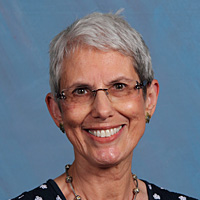I was eager for 3rd grade, anticipating penmanship practice and the transforming of my block printing into what I hoped would look like my mother's handwriting. I had seen her write the looping "D" of her name, Dorothy, adding a curvilinear flourish at the end of her signature. I wanted to write like her.
Growing up in Waltham, Massachusetts, I learned the Rinehart method. William Rinehart was considered the "master of the ornate capital and the shaded letter." His company, located in town, taught Functional Handwriting. The typewriter had appeared; the art of penmanship threatened. But our school cursive lessons kept us moving our fingers, hands, shoulders and arms rhythmically. We wrote compositions with handwriting as personal as our fingerprints. I wrote with an almost Liberace-type sweep, my finger sporting a writer's bump.
Cursive writing lessons remained in schools even as the Royal typewriter became more popular. Defensively, educators spoke about "an increase in discipline and character" because of cursive.
Now there is a current movement to take cursive writing from the elementary school curriculum, I see images of iPads and laptops and keyboards, far from that physical feeling of forming letters on paper, of learning how to hold a pencil and pen, of dipping above and below the lines with my inked ideas.
I am not qualified to side with commentary from either camp to remove or retain cursive writing in schools. On one hand, I read that cursive can lead to more electrical activity in the brain; that it can aid literacy. On the other are plausible arguments that cursive is not needed in a technological age. Even the Post Office discourages cursive's use, so hard is it for optical recognition software to sort cursive addresses.
